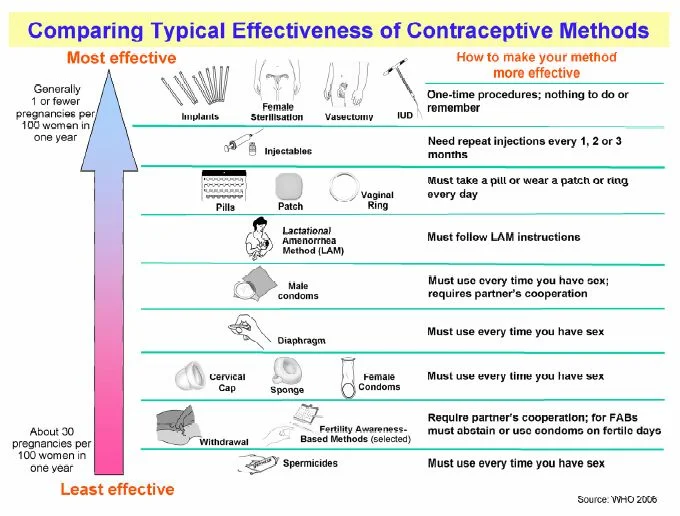
Courtesy of: Marshall University, With research or reaching out to your doctor you're able to find out which birth control method is better fit for you.
Methods of Preventing Pregnancy
The negative stigma surrounding safe sex and contraceptives often scare younger generations, however it is important to inform all, despite not being sexually active. Being aware of all options when it comes to birth control is a part of practicing safe sex. There are about 15 methods of preventing pregnancy which include: hormonal methods, barrier methods, intrauterine implants/ devices, and other methods.
The most effective methods of preventing pregnancy are patches, vaginal rings, injections, IUDs (intrauterine devices), contraceptive pills, and sterilizations. Each method’s effectiveness heavily relies on whether the user uses it correctly. Birth control patches are a three week long must wear patch that are about 90-99 percent effective and must be placed on either the user’s back, butt, stomach, or upper arm.
The vaginal ring – also called a Nuva ring, is a small plastic ring that is 95-99 percent effective and is inserted in the vagina for 3 weeks, releasing hormones in the body. A contraceptive injection (Depo-Provera) is a 90 percent effective shot given every 12 weeks by a doctor. The injection typically takes up to 10 months for one’s fertility to settle into its original state once it’s no longer being taken.
An IUD is inserted by a doctor into the uterus. An IUD may be hormonal or copper based but it is 99 percent effective. The most common U.S. contraceptive is the Birth control pill that is 95-99 percent effective. The various brands of the pill need to be prescribed; there is a pill with both estrogen and progestin and a pill with only progestin.
Sterilization is a procedure that both sexes can undergo, and can consist of a vasectomy that snips the sperm producing tubes or a tubal ligation which clamps a woman’s fallopian tubes. These procedures are 99 percent effective and can be reversed. The diaphragm and male condoms are two other barrier methods that are about 90 percent effective.
The least effective methods of birth control are spermicide, sponge, cervical cap, female condoms and, natural family planning. The spermicide chemical gel is inserted in the cervix 10 minutes before sex and remains effective for one hour. You can find spermicide gels at your local pharmacy and it is able to be used without a prescription. However, the method is 71 percent effective. An uterus sponge is a barrier method that is about 76-88 percent effective, available online made of polyurethane foam . The cervical cap is placed inside the vagina in order to cover the cervix preventing any sperm from reaching an egg; its effectiveness ranges from 70-85 percent and can be found online and in pharmacies. The female condom is 79 percent effective and can be found in pharmacies and online. The natural family planning method is 76 percent effective, it’s the least recommended method and requires tracking one’s menstrual cycle as you measure your ovulation cycle (fertile phase). In order to find the perfect contraceptive method for yourself, please research and ask your doctor which method is the best way. Each method has its own pros, cons and effects.